anatomy
of a hoax

Above: Dust jacket for 1950 hardcover edition of "Behind the Flying Saucers" by Frank Scully.
EVEN AS late summer, 1950, approached its fated autumnal rendezvous across the northern half of planet Earth -- an ancient celestial sacrament, old as the ages, held in reverence, wonder and awe by all great civilizations across the span of time -- the focus of the mid-twentieth century American public was squarely on the contemporary: modern homes, modern fashion, modern tech, modern methods, and modern thinking all round were the order of the day.
And -- in company with atomic bombs of ever-improving civilization-ending potential and rocketships thundering ever-higher into the reaches of space -- there was nothing more modern on the contemporary American scene than the reports of flying discs sighted speeding, hovering and making right-angle turns alongside missiles, jet aircraft and atmospheric-research balloons as they each aired their separate ways through the wild blue of the ever-more-crowded planetary skies.
The first months of 1950 had already seen a succession of events unequalled in garnering public attention since the time of the brief initial "flying saucer" wave of the first weeks of summer, 1947. January had kicked off with the nation's focus riveted on the True magazine article "The Flying Saucers Are Real" by Major Donald Keyhoe -- who had spent the prior eight months in researching incidents and interviewing experts to come to the startling conclusion that the saucers were interplanetary craft surveying the planet. Two months later True would follow up with saucer stories from scientists at White Sands Proving Grounds -- the nation's foremost site of classified missile and rocket research -- telling of their own encounters with discs not only keeping pace but keeping company with their Earth-born aeriform companions.
Seemingly seizing the moment, a fresh wave of sightings in mid-March had saucers not only covering the United States but apparently touring the world. The witnesses included scientists, civilian pilots and airline pilots -- all of whom reported not some vague "something" in the sky but offering vivid descriptions of the discs in riveting detail. Directly afterward, both national columnist Henry J. Taylor and national magazine U.S. News and World Report separately "revealed" that the saucers were secret American aircraft -- an assertion which was hotly denied not only by the Air Force but by the president of the United States himself. Former first lady Eleanor Roosevelt soon had two of the airline pilots on her television program -- stating they "were really qualified people to know what they were looking at". And on April 7, 1950, America's most respected newsman, Edward R. Murrow, narrated a full half-hour radio documentary focusing exclusively on the topic -- an act of unprecedented journalist respect for the situation, both in the program's length and in Murrow's even-handed treatment. Nor would spring -- and the following summer -- see any letup in reports of the baffling aerial parade.
In late May would come the first non-fiction book on the phenomenon, The Flying Saucers Are Real, by Major Keyhoe. Although well-written and ultimately influential, it was not a notable success in the marketplace.
But the popular success denied Keyhoe in late spring, 1950, would come to another writer as the days of summer receded -- with Behind the Flying Saucers, by Frank Scully, staking its own claim to legitimacy on the American flying disc scene.
 BY ALL ACCOUNTS Frank Scully was a good-natured, well liked, and witty man of fervent religious faith -- made all the more remarkable by a life destined to physical illness and pain. Born at the end of the 19th century he began his professional life as a cub reporter in the journalistic rough and tumble of the New York Sun at the beginnings of the twentieth. After leaving the Sun he attended the Columbia School of Journalism, graduating in 1917. Scully then moved to Europe -- primarily for reasons of health and warmer climes --where he became a foreign correspondent for Variety, the trade magazine devoted to all things show business. There he lost a leg to tuberculosis -- as well as the use of one lung -- but found a devoted wife in Alice, a Swedish national who had been his nurse, acknowledged by all to be a caring woman of sweet disposition.
BY ALL ACCOUNTS Frank Scully was a good-natured, well liked, and witty man of fervent religious faith -- made all the more remarkable by a life destined to physical illness and pain. Born at the end of the 19th century he began his professional life as a cub reporter in the journalistic rough and tumble of the New York Sun at the beginnings of the twentieth. After leaving the Sun he attended the Columbia School of Journalism, graduating in 1917. Scully then moved to Europe -- primarily for reasons of health and warmer climes --where he became a foreign correspondent for Variety, the trade magazine devoted to all things show business. There he lost a leg to tuberculosis -- as well as the use of one lung -- but found a devoted wife in Alice, a Swedish national who had been his nurse, acknowledged by all to be a caring woman of sweet disposition.
Summing Scully's years in Europe, New York Times book reviewer Herbert Mitgang would later write...
The warm climate helped to breathe and walk. To Villa Variety most of the celebrities in the arts made a pilgrimage.
But Scully's time in Europe was not restricted to writing for Variety and amusing the glitterati. Scully also acted as a private secretary to an aging Frank Harris -- one of the leading literary figures of his time, and as author of the sexually explicit My Life and Loves, one of the most scandalous. Scully's time with Harris came near the end of Harris' notable life. And here a darker side of Scully emerged.
At the time of Harris' death in 1931, Harris had largely completed an "unauthorized" biography of fellow Irishman George Bernard Shaw. The research materials for the biography having already been assembled, Scully engaged writer (and anarchist) Alexander Berkman to finish the work in partnership with himself. As noted by Paul Kimball in the blog The Other Side of Truth, Shaw himself would finally step in to complete the final chapters of his own "unauthorized" biography, stating...
The book falls off badly at the end. There are two chapters (one of them commercially libelous) so bad that I think [Harris] must have left them to Scully to write."
And therein would lie the other, far less attractive side of Frank Scully -- for later, Scully would publicly and repeatedly claim that he had in fact "ghost" written Harris' entire book. The claim was but part of a pattern -- throughout his professional life Scully would confidently exaggerate his accomplishments, display a vindictive nature, and demonstrate not only a careless attitude towards verifying facts in his reporting but exhibit a lack of respect for both journalistic standards and personal ethics -- all of no great import in a minor gossip column such as that written by Scully, but fatal to higher journalistic ambitions.
By the time Scully came to write Behind the Flying Saucers in 1950 -- he had returned stateside in 1933 -- he had already authored several successful books on other matters. Fun in Bed was a title for a series written for convalescents on how to entertain themselves while bed-ridden with illness -- a subject with which Scully had much personal experience. Rogues Gallery was a collection of essays on famous people Scully had known.
But nothing in Scully's life had seemingly prepared him to step forward as an authority on the flying discs -- and so it was with some surprise that others found him claiming inside scoops on the situation in his gossipy entertainment column for Variety. It began in October, 1949, with the story of crashed discs and their tiny dead crewmembers, kept hidden from the American public by the government as it conducted its secret research. Two more references appeared in his columns of November, 1949, and January, 1950 -- and then nothing more until an April, 1950, announcement by publisher Henry Holt and Company that Scully would pen a "serious" book on the subject.
That book would be published in late summer and generate considerable attention in the press, as from the September 8, 1950, edition of the El Paso, Texas, Herald Post...
Author Tells of 16 Bodies Found in Space Ship Crash
Air Force officers found bodies of 16 "little men" in a space ship that crashed near Aztec, N.M., according to a new book, "Behind the Flying Saucers."
The book, written by Frank Scully, was released today by Henry Holt and Co., publishers, New York.
Details of the asserted discovery have been suppressed, Author [sic, capitalized] Scully says, quoting an unidentified scientist as saying the strange aircraft probably came from the planet Venus.
Meets Specialist
According to Scully, he was consorting with men engaged in magnetic research on the Mojave desert in 1949 when he met a magnetic research specialist, "with more degrees than a thermometer," who told him the story.
"I shall call him Dr. Gee," writes Scully.
Within a few hours after the flying saucer landed, according to Dr. Gee's version to Scully, the Air Force took off from Durango, Colo., and soon found the strange craft, which was about 100 feet in diameter and constructed of an unidentified metal.
Inside the saucer "we were able to count 16 bodies that ranged in height from about 36 to 42 inches," Scully quotes his Dr. Gee.
Examine Clothing
"We took the little bodies out and laid them on the ground. We examined them and their clothing. I remember one of our team saying, 'That looks like the style of 1890.'"
The little men were normal in development and had no appearance of being midgets, Scully quotes Dr. Gee.
Asked what had become of the bodies, Dr. Gee replied that some of them had been dissected and that the little fellows "were in all respects perfectly normal human beings except for their teeth" -- which were in perfect condition, with no cavities.
Resents Secrecy
Dr. Gee, according to Scully, resented the veil of secrecy drawn over the alleged discovery.
Scully says he himself saw a few "baubles" which the Air Force permitted Dr. Gee to retain after examining the mystery ship. These included a tubeless radio, some gears, small disks.
"More than 150 tests failed to break down the metal of the gears," Scully writes. "The gears themselves were of a ratio unfamiliar to engineers of this earth: they had no play, no lubrication."
And with newswires relaying Scully's fantastic claim nationwide, sales of Scully's book began to climb as speedily as the saucers themselves.

Above: Article and pictures from June 26, 1950 edition of Life Magazine.
THE PUBLIC'S IMMEDIATE interest was not surprising. The articles which had appeared in the January and March editions of True gave strong support to the idea that there was much more to the phenomenon than the Air Force was admitting -- a suspicion reinforced by the flurry of sightings and news coverage which had followed. Nor had reports let up for the rest of spring and summer, with some sightings being literally dazzling, as from the May 6, 1950, edition of the Spokane, Washington, Daily Chronicle...
"Saucers" Tie Up Traffic In Rome
ROME, May 6. (AP) -- Two flashing objects high over Rome's central Piazza Colonna brought cries of "flying saucers" from gathering crowds and tied up traffic today.
Hundreds of persons on their way to work stopped to watch them.
The two objects over Palazzo Chigi -- the foreign ministry -- appeared to be a mile or more high and, at that distance, stove-lid size.
They moved slowly but appeared to be on an axis and flashing at regular intervals, like a revolving mirror in the sun or a miniature air beacon.
And as the reports continued to stream in, June had brought with it two perfect examples of the dilemma faced by a public trying to ferret out the truth of things. The first consisted of two jaw-dropping photos of a flying disc taken by an Oregon farmer named Trent. The second was a spectacular report from an Air Force base further down the coast, as related in the June 21, 1950, edition of the Oakland, California, Tribune...
Flying Disc Spotted at Bay Airbase
Saucer in 5 Passes Over Hamilton Field At 1000 m.p.h. Speed
A supersonic disc-shaped object zoomed over the Hamilton Air Force Base, in Marin County, at least five times early today at speeds estimated to be between 1000 and 1500 miles an hour.
Three trained Air Force men were the observers. An Air Force spokesmen [sic] said they will be questioned by intelligence officers and a report sent to the Air Materiel Command, which investigates flying saucers, if their "evaluation" warrants.
Some months ago, the Air Force officially announced it had investigated and found no truth in flying saucer reports.
Shoots Blue Flame
The unidentified object which flew near Hamilton Field today was first seen at 1:35 a.m. by Corp. Roger Pryor, a control tower operator, who said he saw a blue flame shooting out as the object flashed from southwest to northeast.
"I thought it was a falling star, but it didn't fall -- it just kept on going," he said.
Pryor watched it speed out of sight. It returned from the same direction in which it disappeared, roaring like thunder, but Pryor said it was going so fast he failed to see it.
His report was verified, however, by Staff Sgt. Ellis R. Lorimer, another control tower operator, and Staff Sgt. Virgil Cappuro, of the Airways Communications staff, who saw the strange disc on its subsequent passes over the field.
The three men said it was flying between 2000 and 5000 feet altitude. They said the object appeared circular, thick in the center and tapering to the edges, similar to a cone or fan.
Controlled Flight
The airmen used binoculars to watch it and said that it definitely was in controlled flight.
Three times it appeared to pass over the Hamilton Field radio beacon, which is just north of the field, they said.
The blue flame looked like an acetylene torch. Its maneuvers in the area lasted about 25 minutes, Pryor said.
The Marin County Sheriff's office said it had no reports of unidentified craft in the area.
Sky Was Clear
The sky was clear, though fog prevailed elsewhere in the Bay area.
A Hamilton Field spokesman said it was not likely that any statements by the three airmen would be released, and insistently referred to the Air Force's published report that there are no flying saucers.
The Air Force report was made last December after two years of investigation.
Reports from persons who claim to have seen saucers, in the Bay area particularly, have been frequent ever since, however.
And there in a nutshell lay the problem for the public. These two stories alone contained clear and convincing photos of a flying disc, as well as the testimony of Air Force control tower personnel of repeated overflights of a major American air base in an incident lasting nearly one-half hour -- the Air Force reaction being the official announcement that "it was not likely that any statements by the three airmen would be released". Nor did the fact that the spokesman "insistently referred to the Air Force's published report that there are no flying saucers" do anything to assuage suspicions of a cover-up.
Nor was the public offering a particularly favorable reception to the pronouncements of scientists that summer. Several months before Behind the Flying Saucers was released, word came of a new book by Immanuel Velikovsky about to be published -- Worlds In Collision. The book used ancient myths, traditions, texts and religious tomes to support Velikovsky's contention that Biblical catastrophes had actually occurred in historic times, that the same catastrophes had been simultaneously reported worldwide by vastly different and physically separated ancient cultures, and further that these tales taken together suggested Venus was only a very late comer to the solar system. Viscerally angered by its content, a coterie of scientists, headed by Harvard's Harlow Shapley, threatened boycott of the publisher's textbooks if it dared to let Velikovsky's work see the light of day. The public voted on the controversy with its wallets and pocketbooks, turning Worlds In Collision into a runaway best seller.
Thus to much of the public it seemed that if it wanted to hear the truth it would not be forthcoming from the mouths of either the military order nor the scientific priesthood -- it would have to turn instead to outside heralds, and perhaps Scully held the oracular clue to divining this most modern of modern mysteries.

Above: First and second issues of Fate magazine.
PLUS, AT THE VERY LEAST, the fantastic claims to be found in Behind the Flying Saucers promised to make for a highly entertaining read -- a prerequisite for publishing success in modern times, even today.
And as a guide to publishing success in telling such a tale, Scully would need look no further than Raymond Palmer's Fate magazine -- which for most of the previous two years had been America's only periodical featuring highly entertaining "true stories" about the saucers.
Thus, while the "serious" press carried articles such as Popular Science's "Are Secret Balloons The Flying Saucers?" (answer, yes) and Look magazine's "What You Can Believe About Flying Saucers" (answer, nothing, it's all nonsense), Fate would enthrall its readers with amazing stories (coincidentally the title of another Ray Palmer magazine) telling of fantastic adventures (another Palmer title) in the encounters of ordinary mortals with the nearly-magical power of the saucers -- a modern twist on tales of heroes battling the supernatural, which had held people in thrall since the days of Perseus and Medusa.
And so Frank Scully -- who was an unabashed enthusiast of Palmer -- already had waiting in the wings a readership primed and eager for such a modern myth as Scully had to offer. And for that particular group, it would be the undocumented but amazing and fantastic tale to be found in Behind the Flying Saucers -- and not Major Keyhoe's well researched and factual The Flying Saucers Are Real -- which would represent the first authentic telling of the story in book form.
Scully's readers began their odyssey into his world starting even with the cover of its dust jacket, which read...
What are the flying saucers?
Where do they come from?
How do they fly?
Have they been found on earth?
These questions and the observations and facts which surround them are discussed in this believe-it or not book -- a story stranger than fiction which may prove that journeys through space as are commonplace as an ordinary milk-run.
Peering inside the covers, readers would next find its publisher, Henry Holt and Company -- one of the nation's oldest and most respected -- throwing it's full editorial reputation behind both Scully and his sources...
Publisher's Note
We are publishing Behind the Flying Saucers because we believe it to be an exciting, timely, and straightforward interpretation of one of the strangest phenomenon in modern times. It is obvious, of course, that any discussion of flying saucers from whatever point of view is bound to be controversial. This book is no exception, for Frank Scully's conclusions as to the nature of these craft differ sharply from those held officially by the Department of Defense.
However, we are as convinced as any thoughtful publisher can be that Mr. Scully has approached his subject with probity and has interpreted the facts and figures given him with care and caution. In writing this book he has had extensive interviews and assistance from scientists and other experts in such fields as magnetic energy, astronomy, and aerodynamics -- men who are reputedly high in their profession but some of whose names, as will be apparent in reading this book, must be kept anonymous...
And therein lay the hook which would draw so many in -- this would be the "true" story of the flying discs as revealed by "scientists and other experts in such fields as magnetic energy, astronomy, and aerodynamics". But because these scientists were so highly placed, and because they were amongst the few privy to the hidden nature of the saucers, the scientists could not be publicly named. They were members of a modern secret society whose esoteric workings were kept as impenetrable as those of the Eleusinian Mysteries twenty-five hundred years before. Nonetheless, some were willing to clandestinely reveal the secret to the world -- by way of Frank Scully, gossip columnist for Variety, and author of Fun in Bed -- with Scully, like the soothsayers of old, offering his "interpretation of one of the strangest phenomenon in modern times".
Meanwhile, Scully's own preface drew on an equally ancient theme -- a subjugated people fighting against tyranny, with Scully as their Spartacus. It began with a well written and ringing condemnation which skillfully tapped into a multi-generational and growing discomfort with the changing relationship between the government and the governed in post-war times...
Author's Preface
BETWEEN THE PEOPLE and government today lies a double standard of morality. Anything remotely scientific has become by government definition a matter of military security first; hence of secrecy, something which does not breed security but fear. If we see anything unusual, even in the skies, we the people must either freeze our lips, like a Russian peasant at the sight of a commissar, or give our names, addresses, business connections, and testimony to be screened and filtered by anonymous intelligence officers.
Feared and respected by many people, these anonymous creatures can deny what we say, ridicule what we say, and sometimes (and in an increasing number of countries) jail us for what we say -- especially if our timing does not match to the second their intended official pronouncements on the subject...
Thus having established the enemy of truth -- faceless and potentially fascist forces of secrecy within the government -- Scully used down-the-rabbit-hole logic to imply that what would follow in the coming chapters must be true, because it would be denied...
The only way for a free people to fight such encroachments on free inquiry is to say in advance, "What I am telling you will be denied," or "This is true but those who say so now will be branded as dreamers, and if they persist, as liars."...
There is only one thing to do under such a setup. Expose their tactics. Show that more offenses are committed under the word "defense" than this world dreams of. Insist that what we say is the whole truth, and what they say is not the whole truth...
Scully's preface then moved on to give a highly distorted version of events which had preceded his book...
Perhaps it would be clearer to readers if I illustrated with a few samples of this dismal wallpaper pattern. On June 24, 1947, businessman Kenneth Arnold of Boise, Idaho, flying his own plane, first reported he had seen several flying saucers in the area of Mt. Rainier, Washington. Reports of other saucers from other areas followed.
Then on August 9, Lieutenant Colonel Donald Springer, assistant to the chief of staff of the Fourth Air Force, decided to stop the nonsense. Despite the fact that his command had an unsolved mystery on its hands concerning molten material claimed to have fallen on Maury Island, and the death of two army pilots who were transporting the material for further examination, Colonel Springer said, as far as he was concerned, there was no basis for belief in flying disks in the Tacoma area "or any other."
Newspapers took this as some sort of hint and piped down on the subject. With what result? That by January, 1948, six months after Colonel Springer's dismissal of the subject, the Pentagon set up Project Saucer to investigate the hundreds of reports that had been coming in. Fate devoted almost half of its first issue to flying saucers and led off with an article by Kenneth Arnold entitled "I Did See The Flying Disks."
Project Saucer proceeded in a quiet unhysterical way for eighteen months before issuing even a preliminary report. The Saturday Evening Post apparently got the idea that the report was going to be negative, so it had Sidney Shalett prepare two articles on the subject for almost simultaneous release with the Air Force report. The articles turned out to be rather long winded recapitulations of various flying saucer case histories previously explored, and the general impression left after reading them was that believers in the actuality of flying saucers appeared as not quite bright.
Shalett's first article appeared in the Post issue dated April 30; the second, May 7. The April 30 issue was on the newsstands several days before April 30, of course. In fact, it was on sale when the Air Force issued its April 27 preliminary report. The Air Force report crossed up the Post. This was in line with the pattern I have previously outlined of making fools of collaborators.
Far from confirming Colonel Springer or the Post, the official report held that there was something to the flying saucer stories after all. It even entertained the idea that the saucers might be from another planet. It left many of its case histories with no solution, as far as this earth or Air Force Intelligence was concerned, but promised more light on these later.
Having thus proceeded to lure the Post into "fronting" for a negative approach, the Air Force proceeded to accentuate the positive. This naturally opened the door to those rival editors who thought they saw a new trend. True magazine figured it could cash in on the Post's loss of face. Its publisher, editor, and a contributor reassembled much of the Fate and Post material and told the tale again, except that instead of casting doubt on all believers in aerial disks, True followed an older party line established by Fate in the spring of 1948 and declared in December, 1949, "Flying Saucers Are Real."
Scully's distortions were almost breathtaking in scope -- with nearly the only thing he managed to get right being the date of Kenneth Arnold's sighting. Contrary to his assertion, press interest in the saucers died down as the reports themselves dried up by mid-July, 1947 -- long before and certainly not in reaction to Col. Springer's statement in August. Nor was it remotely true that Springer's "command had an unsolved mystery on its hands concerning molten material claimed to have fallen on Maury Island" -- which by the time of Springer's statement already had the two main players admitting it had all been a hoax -- admissions which had also been not only been made to the F.B.I. and publicly reported in the newspapers, but personally confessed to a newspaper reporter by one of the players before the F.B.I. became involved.
As Scully said, in January, 1948, the Air Force set up the first official investigation, but not because of "hundreds of reports" -- a hyperbolic overestimate in any case -- but because a select few incidents were sufficiently worrying to warrant further investigation. That the (mistaken) claim "Fate devoted almost half of its first issue to flying saucers" (it was actually about a third) was implied by Scully to be a matter of significance neglected that with that same issue came articles entitled "Invisible Beings Walk The Earth", "Automatic Writing ... Blessing Or Curse?", and "Giants In Ancient America". But at least the inference was clear: readers who trusted what was written in Fate could trust Scully as well.
Scully's retelling of the "Project Saucer" report and the Look magazine articles was also contrary to the truth. In fact, the Sidney Shalett piece had been in the works for months and was already penned and in the hands of editors before the idea of making a public report was born -- and so it couldn't be that the Post "apparently got the idea that the report was going to be negative". Behind the scenes, the Air Force had decided to release the "Project Saucer" report in hurried reaction to an event completely unrelated to the Post article -- the assertion by Walter Winchell on his national radio program in early April that the saucers were Soviet devices flying at will over American skies.
But Scully's most egregious -- and vindictive -- "error" was his slam at True and Major Keyhoe (or as Scully referred to him, "an associate"). Ken Purdy, True's editor, was highly regarded in the publishing industry. Major Keyhoe was a dogged investigator who used his connections -- he had had a distinguished career in aviation -- to assemble and report the facts. His January, 1950, article in True had been the result of careful research, and was acknowledged by all to be groundbreaking. Meanwhile, Scully's assertion that Purdy and Keyhoe "figured" they "could cash in on the Post's loss of face", as well as Scully's snide declaration that Keyhoe had "reassembled much of the Fate and Post material and told the tale again" would all be laughable, if it was not such a crude attempt to denigrate his journalistic betters. But again the inference was clear: if readers wanted the truth, it was not to be found with anyone else but Scully.
Then, after twisting prior events and spitefully dismissing the only serious researcher publishing on the phenomenon -- for reasons which may become even clearer later -- Scully ended his prefatory remarks with the attitude of being a beacon of truth leading the masses in their fight against the forces of oppression, while cloaking himself in a mantle of scientific respectability, and the flag...
Though I have not the slightest interest in what the military may or may not say about this book, I want my readers to understand my position. I have never seen a flying saucer. I have never had a hallucination that I have seen a flying saucer. I have never joined in any mass hysteria on the subject, and to the best of my knowledge and belief I have never participated in the perpetration of a hoax on flying saucers.
I have talked to men of science who have told me they have not only seen them but have worked on several. I have tried to the best of my ability to find flaws in their stories. But to date I have not succeeded in placing them in any of the three categories laid down by the Air Force.
Scientists do not want to go to war with the Army over the issue. They have to get essential materials for research, and certain branches of the Department of Defense might find it difficult to find such essential materials for scientists who will not cooperate. Do they make themselves clear?
Is it any wonder therefore that I advise readers to treat any official comment as no more to be considered than old newspapers blowing in the wind? In fact, if such faceless men should say that the objects are (a) newspapers or (b) not newspapers but fragments of flying saucers, they are not to be believed either way. Not until we, the people, we who, have names, addresses, and the courage of our convictions, not until we say there are such things as flying saucers, is it authentic. And we have been saying it for sometime [sic].
Now read Behind The Flying Saucers and throw in the fire unread all the Pentagonic denials from this day forward.
Decoration Day Frank Scully
1950
And having thus tilled the emotive ground, chapter one would plant the seed from which Scully's tale would flower, beginning with an overview of the events and varying coverage of the previous March through April, followed by "the real inside story"...
Chapter One: The Mystery of The University of Denver...
...But the real inside story had been missed by all of them. It happened on March 8, 1950, in Denver, Colorado. On that day at 12:30 P.M. 350 students of the University of Denver skipped lunch to hear a confidential scientific discourse delivered by what the press described later as "an unidentified middle-aged lecturer."
He delivered what was probably the most sensational lecture about this earth or any other planet since Galileo said, "It moves!" He gave the whole inside story of a flying saucer which he said had landed within 500 miles of where he was now talking, and he described the space ship and its personnel in such detail that the undergraduates and faculty members left the lecture room with their heads spinning.
Such is the nature of man's distorted sense of curiosity, however, that who the lecturer was soon began to overshadow what he had said. He, not the flying saucer, became the mystery that had to be solved by the students first.
It was recalled some hours later that the lecturer had been escorted by one George T. Koehler of 315 Franklin, Denver 3, Colorado, a staff member of an independent Rocky Mountain radio station, with the call letters of KMYR. It was commented upon by those faculty members who attended the lecture that Koehler never introduced the lecturer by name to anybody. (But the lecturer later explained to me that the professor whose job it was to guard the speaker's anonymity in his introduction certainly knew who he was.)
Before beginning the main body of his talk, the lecturer explained that he would purposely have to leave out certain names, dates, and places, and must not be asked about them, as some of the scientists were working on security projects, and therefore were not free to talk even about such flying saucers as they were reported to have examined personally. With that even the professors got out their notebooks.
He talked like a faculty member who knew how to time his well-considered words so that the scribbling students would not fall off at the first turn. He spaced his revelations, which at the end of the lecture were described as "startling," "sensational," "spellbinding," and "electrifying," by the majority; and "absurd," "ridiculous," and "unbelievable," by the minority.
In actual figures his lecture, which took 50 minutes, left about 40 per cent of his audience still with their mystery. The lecture was arranged for students of a basic science class, on the condition that it was not to be publicized. But from a group of 90 students, the gathering had grown, by grapevine, to a capacity audience. Professors of astronomy and engineering, as well as their students, piled in. There wasn't even standing room only.
The negotiations between the faculty and the spokesman for the lecturer took months to arrange, as the speaker wasn't keen about being "evaluated," but when the science students voted 100 per cent to hear the lecturer, he acquiesced. Of these, 80 per cent said, after the lecture, that they were "impressed." By a show of hands 60 per cent indicated they believed the man knew what he was talking about, that he obviously was a member of the group of scientists he described as having examined space ships which had landed on this earth from, in all likelihood, another planet. More, they believed the mystery man of science had the best answer to the secret of propulsion behind these flying saucers and that it was neither combustion nor jet.
Another poll taken later reduced the college-bred believers in this staggering story from 60 per cent to 50 per cent.
This was considerably higher than the over-all credence in flying saucers. According to a nation-wide survey by the United Press, one out of every four believed the objects were real ships. Actually 26 per cent believed they were and 8 per cent weren't sure. The rest agreed with the Air Force spokesman who said they were hallucinations, mass hysteria, or hoaxes. These would include those members of the University of Denver faculty who thought their speaker's performance was at best a very good act. It would also include those who suspected it was a hoax played on the fair name of a proud university. But all agreed that the mysterious stranger talked as plausibly, as conservatively, and as scientifically as Einstein, Oppenheimer, or Busch might have talked if placed in the position of presenting equally sensational revelations to an equally skeptical audience.
After the mysterious scientist had been plied for fifteen minutes with questions, George Koehler cried: "Great Scott, we have to get out of here! You have only twenty minutes to catch your plane!"
With that, the pair hurried out of the building, climbed into a high-powered car and drove off.
The conversation piece on interplanetary travel had set up such a chain reaction that within the hour members of the faculty, students, newspaper editors, and radio commentators were trampling all over each other in their mad haste to violate a confidence. Within two hours they in turn were being questioned by Air Force Intelligence officers.
The first thing the investigators wanted to know was what was the man's name. Nobody quite knew. One freshman remembered he had been referred to as "Great Scott" just before he and Koehler took off. A faculty member recalled introducing him to another as "Mr. Sears," and being corrected; but he couldn't remember what the man said his name was.
"I think he said it was 'Newton' or maybe that he was a friend of Newton."
"You mean the Mayor of Denver?"
No, they were sure he wasn't the Mayor of Denver.
"You mean a man can lecture at the University of Denver and not be identified at all?" the military demanded.
The faculty didn't quite mean that, certainly not in the face of all loyalty oaths, witch-hunting, and security taboos which were bogging down what was left of their academic freedom, but the man had been vouched for by Koehler and, after all, he only had talked harmlessly on a fascinating subject about which man had speculated for hundreds of years.
"Harmlessly?" the military repeated. "How do you know the subject is harmless? Did anybody get the number of his car? Or overhear what hotel he was stopping at?"
Well, one auditor remembered that Koehler did say that the man had to catch a plane in twenty minutes.
"Did he say to where?"
"No," the informer remarked, "but Koehler would know."
"Oh, Koehler!" the investigator cried in disgust.
Why that? Well, for months it seems Air Force Intelligence as well as editors -- from Publisher Ken Purdy of True who was out on a limb because he had proclaimed in giant type "FLYING SAUCERS ARE REAL," down to an un-bylined reporter on The Kansas City Times -- had been badgering Koehler about details concerning flying saucers. Actually Koehler had none firsthand. He told them so. Purdy rushed Donald Kehoe [sic throughout, should be Keyhoe] out to Denver from Washington to get the story. Money was no object. But Koehler said he had no firsthand information. So, incensed, they threw the book at him. One Kansas City reporter who hadn't met Koehler, called him "Coulter" and said it was all a hoax. An A.P. feature writer who hadn't met Koehler either, repeated the fallacy. Kehoe picked it up on the bounce and repeated it, too. Koehler called them the sort of names which would be out of place here, since this is not a modern novel.
No one would believe him, least of all Air Force Intelligence, whose members acted as if they were quite sure Koehler had a pipeline into the very cabin of a flying saucer which was reported by some to have landed somewhere in the Great American Desert, and was further reported by others to have been dismantled by the very souvenir-hunting military of which Air Force Intelligence was an integral part. Were the military Dick Tracys seeking information or were they trying to bottle up all who had the same information they had? Were they fearful that their own experiments in space ships would leak out, or did they believe the flying saucers were being hurled like boomerangs from behind the Kremlin wall?...
Koehler had been one of many private citizens who had had a brush with a counterespionage body. But having been an old professional football player on the Chicago Bears before he got into the selling end of radio, he was not one to take a roust without delivering a counterpunch. When an army investigator turned up at Station KMYR on the hunt for flying saucer data, Koehler decided to record their conversations.
On a subsequent visit from another officer representing Operation Hush-Hush (which presumably had supplanted Project Saucer) Koehler was surprised when at the end of the interview he was ordered to surrender the reel. "We know you have been recording these interviews," the officer told him. "Now hand them over."
Caught off guard, Koehler said he'd have to consult the station's owner before handing over company property to anybody.
"If it's for reasons of security" [the magic word], "by all means," the proprietor agreed.
Koehler left the conference, explaining he'd have to have the engineer rewind the recordings, which happened to be on tape. Having also learned how to handle government bureaucrats from their own double-talk, Koehler went to the engineer's booth and with his back to the military winked at the technician and then ordered, "Fix up the recordings for the gentleman."
He sure fixed them. In rewinding the spools the engineer demagnetized the wire, completely wiping out all recorded conversations as if a wet sponge had been rubbed over a chalk mark on a blackboard. Thus when played back later by the exultant espionage officers the result was exactly nothing. So when in the pursuit of the mystery man of science who had lectured at the University of Denver the Air Force Intelligence boys cried, "Oh, Koehler!" they were practically adding under their breaths, "We could wring that bird's neck!"
What they did instead was to summon all passenger lists of commercial planes out of Denver on March 8, from 1:30 P.M. on. They combed these to see if any scientists whose names had ever come up in relation to the late Project Saucer had defied an unofficial directive for all scientists remotely connected with defense (and that about included everybody with a B.S. degree) to button up about flying saucers. The manhunt got nowhere. The mystery man of science hadn't left town on any plane from Denver that day...
Once again, Scully had so thoroughly distorted his "facts" -- and flung them so fast and furiously -- that to entirely untangle them from the truth would require twice the ten pages he devoted to his opening screed, which itself was but the first half of the beginning chapter of a 17-chapter book.
To begin with, his description of awe and wonder with which the lecturer was regarded by students and faculty alike is not reflected in the news coverage of the time, as from the March 10, 1950, edition of the Greeley, Colorado, Tribune...
Mystery Lecturer on Discs from Venus Failed To Fool D.U. Class; Dimmick Backs Down on Gimmick
Denver. March 10. -- (UP) -- Their instructor says Denver university science students are skeptical of an anonymous lecturer's report, that midget-size pilots have flown three flying saucers to earth from Venus.
The middle aged lecturer, who termed himself a "scientist" but wouldn't reveal his name, talked about the flying discs Wednesday. After 24 hours reflection and discussion, the students had an evaluation session yesterday.
The class instructor, Prof. Francis F. Broman, said the students felt the information was of "little value." Broman said the students concluded the lecturer's statements, tho seemingly sincere, didn't meet their tests for valuable information. The criteria included:
"Did the speaker have first hand information?"
"Was he a skilled observer?"
"Had the information stood the tests of public scrutiny?"
Broman said he thought the lecture by the speaker was a "good test of the student's ability to weigh evidence."
Prof. Francis Broman is the son of the late Dr. O.F. Broman, a Greeley physician. Francis graduated from Greeley high school and later taught there...
The article went on to report that one science professor stated, "The speaker either was a very good actor or very sincere. It was a good show. His story was very interesting." It then moved on to quotes from George Koehler -- the advertising salesman who had brought the anonymous lecturer before the science class...
Koehler told a reporter he arranged for the lecturer because he had been "badgered" for several months by a student friend wanting to learn the "true story of the flying saucers." Koehler added that he considered the lecturer's report "to be a fact."
And it is in regard to George Koehler that Scully in this first half of his first chapter distorted the "facts" nearly beyond all recognition. Thus Koehler's statement to a reporter that "he had been 'badgered' for several months by a student friend" became in Scully's mind "negotiations between the faculty and the spokesman for the lecturer took months to arrange". Likewise, Scully's assertions that "the science students voted 100 per cent to hear the lecturer", and that "by a show of hands 60 per cent indicated they believed the man knew what he was talking about, that he obviously was a member of the group of scientists he described as having examined space ships which had landed on this earth from, in all likelihood, another planet" appears nowhere in any published account of the lecture save Scully's.
Meanwhile Sully's claims that students also "believed the mystery man of science had the best answer to the secret of propulsion behind these flying saucers and that it was neither combustion nor jet", in company with the other descriptions of student reaction above, must have made for quite an arm-tiring session of questions to be voted upon "by show of hands" -- not even including the one in which "all agreed that the mysterious stranger talked as plausibly, as conservatively, and as scientifically as Einstein, Oppenheimer, or Busch might have talked if placed in the position of presenting equally sensational revelations to an equally skeptical audience".
But the most fervent paranoid imaginings would come with Scully's assertion that "within the hour members of the faculty, students, newspaper editors, and radio commentators were trampling all over each other in their mad haste to violate a confidence" and that "within two hours they in turn were being questioned by Air Force Intelligence officers." It is true that the day after the lecture the following telex message went out from the Denver bureau of the FBI to agency headquarters in Washington, D.C. [Note: names blacked out on the original included in brackets when known]...
FBI, DENVER 3-9-50 9-25 PM JHM
DIRECTOR, FBI URGENT [Blacked Out]
FLYING SAUCERS. TWO SOURCES ADVISED TODAY THAT UNIDENTIFIED INDIVIDUAL HAS GIVEN AT LEAST ONE AND POSSIBLY MORE LECTURES BEFORE CLASSES AT DENVER UNIVERSITY YESTERDAY OR TODAY IN WHICH HE DISCUSSED FLYING SAUCERS WHICH HE ALLEGEDLY PERSONALLY OBSERVED. THIS PERSON CLAIMS TO HAVE SEEN SEVERAL SUCH OBJECTS, ONE OF WHICH ALLEGEDLY LANDED IN NEW MEXICO. HE ALSO CLAIMS TO HAVE OBSERVED OCCUPANTS OF SAUCERS DESCRIBED BY HIM AS OF HUMAN FORM, BUT ABOUT THREE FEET TALL. THESE OCCUPANTS OF SAUCERS ALLEGEDLY DEAD AT THE TIME HE OBSERVED THEM. THIS LECTURER [MR. X] REFUSED TO REVEAL IDENTITY, BUT IS KNOWN TO [GEORGE KOEHLER], WHO IS [OCCUPATION BLACKED OUT] CONNECTED WITH [RADIO STATION KMYR], DENVER. [KOEHLER] REPORTED TO HAVE MADE SOME PREVIOUS CLAIMS HIMSELF WITH RESPECT TO OBSERVING FLYING SAUCERS. LOCAL PRESS AND ALSO WIRE SERVICES CARRYING STORIES CONCERNING THESE LECTURES AT DENVER UNIVERSITY. OSI, DENVER, HAS NO ADDITIONAL INFORMATION EXCEPT THAT [GEORGE KOEHLER] IN JANUARY THIS YEAR REPORTED TO HAVE MADE SIMILAR CLAIMS AND UPON INVESTIGATION WAS UNABLE TO PRODUCE ANY VERIFIABLE INFORMATION. OSI CONSIDERS [KOEHLER] AS PROBABLE MENTAL CASE. BUREAU ADVISE WHAT, IF ANY, ACTION DESIRED AT DENVER.
KRAMER
END
The language of the telex -- sent at the end of the day after the lecture -- that "local press and also wire services carrying stories concerning these lectures" presents a far more prosaic account of government interest in the story than the "within the hour" version asserted by Scully.
And in fact, the "OSI" mentioned in the telex was the local district of the Air Force Office of Special Investigations, which had first interviewed George Koehler in January -- two months before the lecture -- in regard to a similar story Koehler had told to one Rudy Fick of Kansas. Fick had been in the Denver business office of an associate -- along with several others -- when George Koehler arrived and proceeded to reveal the amazing story of his fantastic adventure of having personally "crashed the gates" of a radar installation in Arizona.
It was there, Koehler insisted, that he saw two crashed saucers and their dead "little men" crewmembers -- adding that "there are around fifty of these craft that have been found in the United States in a period of about two years".
Meanwhile Fick -- who was the one getting Koehler's name wrong as "Coulter" -- repeated Koehler's tale to people back in Kansas, including a local newspaper, the Wyandotte Echo, which on January 6, 1950 published the story. Details included the fact that according to Koehler the disc contained a metal which had "defied analysis", a piece of which Koehler had in his possession and showed to Fick and the others. And according to the Echo article...
In addition to the piece of metal, Coulter showed the group including Fick a clock or automatic calendar taken from one of the crafts. It consisted of two pieces of metal sandwiching some unusual type of material. On the face of one of these pieces of metal appeared an indentation, which, rotating around the disc, completed a cycle each 28 days, a lunar month.
The newspaper's sensational story was picked up by other papers, including the Kansas City Star, attracting Air Force interest in this alleged breach of military security (crashing the gates of a radar installation), and leading to a local investigation of Koehler by the Denver-based 14th District Office of Special Investigations out of Lowry Air Force Base.
As part of that investigation, Special Agent Frederick Ungerer had interviewed two friends of Koehler's who had been part of his meeting with Fick. The two men confirmed the details of Koehler's story as repeated by Fick, and added "KOEHLER also told of fifteen (15) flying saucer occupants parachuting to earth near Phoenix and that they became invisible when pursued". It was when the men were asked for their assessment of Koehler that the language of "mental problems" noted in the FBI telex had emerged...
It is the firm opinion of Mr. MURPHY and Mr. VAN HORN that KOEHLER does not have a "full string of fish", and that he is "probably off his rocker".
Later, interviewing Koehler himself, the following details emerged...
Mr. GEORGE KOEHLER, radio advertising salesman, Station KMYR, Denver, Colorado, was interviewed 19 January 1950. He affirmed the meeting at the Ford Motor Company with MURPHY, VAN HORN, FICK, DAVIES, and several others. He admitted devulging [sic] to these persons information concerning flying saucers, but denied very profoundly having had any metals or gadgets. He also denied mentioning any names regarding his sourse [sic] of information. KOEHLER stated that he had no parts of flying saucers in his possession at present. He denied having ever seen any flying saucers or their occupants. He stated that the source of his information was confidential in nature and that he was duty-bound not to reveal such source. KOEHLER stated that if he had been contacted by OSI Agents a month ago, he would have given any information that he might have had. He claimed to have been contacted by his source and told to forget everything he knew, concerning the flying saucers. KOEHLER claimed to have been approached by at least three magazines and offered as high as $5,000 for his flying saucer story. He was also approached by a representative of the Kansas City Star. He declined to reveal any information. KOEHLER stated that he fully believes that flying saucers do exist and that interplanetary travel is being accomplished.
Koehler's claim that he had "been approached by at least three magazines and offered as high as $5,000 for his flying saucer story" had at least some basis in reality, as Major Keyhoe would write in his book released in late May...
The story of the "little men from Venus" had been circulating for some time. In the usual version, two flying saucers had come down near our southwest border. In the space craft were several oddly dressed men, three feet high. All of them were dead; the cause was usually given as inability to stand our atmosphere. The Air Force was said to have hushed up the story, so that the public could be educated gradually to the truth. Though it had all the earmarks of a well-thought-out hoax, many newspapers had repeated the story. It had even been broadcast as fact on several radio newscasts...
While I was waiting for Wright Field's answer, Ken Purdy phoned. He told me that staff men from Time and Life magazines were seriously checking on the "little men" story. Both Purdy and I were sure this was a colossal hoax, but there was just a faint chance that someone had been on the fringe of a real happening and had made up the rest of the story.
The key man in the story seemed to be one George Koehler, of Denver, Colorado. The morning after Purdy called, I took a plane to Denver. During the flight I went over the "little men" story again. It had been printed in over a hundred papers.
According to the usual version, George Koehler had accidentally learned of two crashed saucers at a radar station on our southwest border. The ships were made of some strange metal. The cabin was stationary, placed within a large rotating ring.
Here is the story as it was told in the Kansas City Star:
In flight, the ring revolved at a high rate of speed, while the cabin remained stationary like the center of a gyroscope.
Each of the two ships seen by Koehler were occupied by a crew of two. In the badly damaged ship, these bodies were charred so badly that little could be learned from them. The occupants of the other ship, while dead when they were found, were not burned or disfigured, and, when Koehler saw them, were in a perfect state of preservation. Medical reports, according to Koehler, showed that these men were almost identical with earth-dwelling humans, except for a few minor differences. They were of a uniform height of three feet, were uniformly blond, beardless, and their teeth were completely free of fillings or cavities. They did not wear undergarments, but had their bodies taped.
The ships seemed to be magnetically controlled and powered.
In addition to a piece of metal, Koehler had a clock or automatic calendar taken from one of the crafts.
Koehler said that the best assumption as to the source of the ships was the planet Venus.
When I arrived at Denver, I went to the radio station where Koehler worked. I told him that if he had proof that we could print, we would buy the story.
As the first substantial proof, I asked to see the piece of strange metal he was supposed to have. Koehler said it had been sent to another city to be analyzed. I asked to see pictures of the crashed saucers. These, too, proved to be somewhere else. So did the queer "space clock" that Koehler was said to have.
By this time I was sure it was all a gag. I had the feeling that Koehler, back of his manner of seeming indignation at my demands, was hugely enjoying himself. I cut the interview short and called Ken Purdy in New York.
"Well, thank God that's laid to rest," he said when I told him...
On the trip back, I bought a paper at the Chicago airport. On an inside page I ran across Koehler's name. According to the A.P., he had just admitted the whole thing was a big joke.
All of which also helps account for Scully's antipathy towards Major Keyhoe -- for George Koehler was not only an associate of the "anonymous lecturer", but in fact an associate of Scully as well. And Scully was about to feature Koehler in his book as the man who had conducted negotiations with the university for months and then brought and personally introduced the "mystery man of science" to the soon-to-be-awestruck students.
But both Keyhoe's and the Air Force investigator's interactions with Koehler had occurred in January, 1950 -- two months before the lecture at Denver. And no investigative file in the declassified files of Project Grudge -- the real name of the Air Force investigation commonly referred to as "Project Saucer" -- reveal any contact with Koehler after January 19, 1950. And so Scully's wildly extravagant rendition of "military Dick Tracys" being outfoxed by a wily George Koehler (using a wink and a nod to the studio engineer to surreptitiously erase alleged recordings of the alleged event) not only become even more ludicrous than they seem at first reading, but reveal their intent -- to rehabilitate Koehler as a hero in the eyes of any who may have remembered the fantabulist about whom Keyhoe wrote.
Nor could Scully possess the first-hand knowledge he implied in stating that Air Force investigators would "summon all passenger lists of commercial planes out of Denver on March 8, from 1:30 P.M. on" in an attempt to identify the "anonymous lecturer" -- or that, "The manhunt got nowhere. The mystery man of science hadn't left town on any plane from Denver that day...".
It was all literary invention -- giving the lie even within the very first pages to the publisher's claim that "Mr. Scully has approached his subject with probity and has interpreted the facts and figures given him with care and caution."
But after all, this was the midpoint of the very modern twentieth century -- eons past the time when sages would drink hemlock rather than deny the truth. And for publisher Henry Holt, in a time when the advertising slogan had already replaced philosophy in people's lives and reputations were increasingly built not on actions but on perceptions, such means no doubt reflected nothing more than commercial expediency -- not only an accepted business practice, but an ordinary and expected one.
As for Scully himself, this first half of chapter one had but purified his initiates while revealing to them only the merest ripples upon the mystic waters of the "true" tale he was about to divine...
...with omens yet unread and the hidden meaning still cloaked behind its veil, in this most modern of modern mysteries, in this most modern of modern times.
Notes:
1. The transcripts herein have been prepared from the original 1950 first edition of Behind the Flying Saucers.
2. The full Air Force investigative reports from which portions are included above are available for review here.
3. An excellent description of the Eleusinian Mysteries can be found at the Encyclopedia of Ancient History.
4. Quoted material has necessarily been abridged in the post. The entirety of the publisher's preface reads...
Publisher's Note
We are publishing Behind the Flying Saucers because we believe it to be an exciting, timely, and straightforward interpretation of one of the strangest phenomenon in modern times. It is obvious, of course, that any discussion of flying saucers from whatever point of view is bound to be controversial. This book is no exception, for Frank Scully's conclusions as to the nature of these craft differ sharply from those held officially by the Department of Defense.
However, we are as convinced as any thoughtful publisher can be that Mr. Scully has approached his subject with probity and has interpreted the facts and figures given him with care and caution. In writing this book he has had extensive interviews and assistance from scientists and other experts in such fields as magnetic energy, astronomy, and aerodynamics -- men who are reputedly high in their profession but some of whose names, as will be apparent in reading this book, must be kept anonymous.
We, like most people, including Mr. Scully, have never seen a flying saucer. But from the mass of evidence as reported in the press and magazines by reputable persons, there is much reason to believe that they actually do exist. What they are, where they come from, or how they fly, we do not presume to know. Mr. Scully attempts to answer some of these questions and we're sure that you'll find his answers both fascinating and provocative. We did.
5. Quoted material has necessarily been abridged in the post. The entirety of the author's preface reads...
Author's Preface
BETWEEN THE PEOPLE and government today lies a double standard of morality. Anything remotely scientific has become by government definition a matter of military security first; hence of secrecy, something which does not breed security but fear. If we see anything unusual, even in the skies, we the people must either freeze our lips, like a Russian peasant at the sight of a commissar, or give our names, addresses, business connections, and testimony to be screened and filtered by anonymous intelligence officers.
Feared and respected by many people, these anonymous creatures can deny what we say, ridicule what we say, and sometimes (and in an increasing number of countries) jail us for what we say -- especially if our timing does not match to the second their intended official pronouncements on the subject.
Just as the communists have made a god of their Uncle Joe, we have begun to deify our faceless spokesman. Both should be fought by free men as word oppressors.
Without going into it at too great a length, this all ties up with the loss of faith in formal religion, which forces people to cling to the New Sublimation.
The only way for a free people to fight such encroachments on free inquiry is to say in advance, "What I am telling you will be denied," or "This is true but those who say so now will be branded as dreamers, and if they persist, as liars."
It completely destroys American sportsmanship standards when we, the people, stick to the rules while an opposing team of censors who have usurped our rights are permitted, by their own handpicked referee, to pull rabbit-punches on defensive play, hamstring us from the rear if we seem to be running well in an open field, and even machine-gun the ball in midair if we are kicking an almost certain field goal.
There is only one thing to do under such a setup. Expose their tactics. Show that more offenses are committed under the word "defense" than this world dreams of. Insist that what we say is the whole truth, and what they say is not the whole truth.
That may seem a dreadful way to treat our own flesh and blood, our commissioned sons who have been trained for combat but have been assigned in peacetime to espionage and counter espionage. But since our sons in uniform do not report to us, the people, but to Central Intelligence (which as far as we can make out reports to nobody and is answerable to nobody), how otherwise can we get our current findings to our own friends?
Scientists believe they have suffered more than any other group from the postwar loyalty hysteria but writers cannot be far behind them. The "thread of intolerance" which runs through our history has now become as thick as a noose to hang us. Under the circumstances, to write a book, knowing not only that you will be ridiculed, but also knowing who will do the ridiculing, and not have a counteroffensive ready, is to be starry eyed and unrealistic.
Rather than be rated dreamers by such obvious interior proof that we are dreamers, it is a good deal smarter to swing first and say that all bureaucrats, whether in tweeds or bogged down with salad dressing, are incompetent time servers, hanging on the public payroll till pensioned or rewarded with a stuffed shirt job in private enterprise (privately endowed universities, naturally, included) and are truth trimmers to boot.
In order to regain this lost freedom we will have to say "a pox on both your houses" and cease to be brushed off by the perpetual hocus-pocus involved in such phrases of these spokesmen as "top secret," "secret and confidential," "restricted," and, "withheld for reasons of security."
Such brush-offs are almost invariably followed by a statement from another department of the defense arm, that what we are hiding isn't really worth concealing, that we are defended by old and obsolete equipment, and that, finally, unless we grant them an additional billion dollars for new equipment overnight, we are dead ducks, saucers or no saucers!
Propaganda has made true-and-false practically obsolete in our language. In fact, if a spokesman has served time in intelligence, it may fairly be said, the truth is no longer in him. Spies cannot even buy or sell lies with skill. If so, why are they being arrested all over the world and almost invariably getting a sentence of fifteen years? Has that become the fair trade practices act on the international level?
Perhaps it would be clearer to readers if I illustrated with a few samples of this dismal wallpaper pattern. On June 24, 1947, businessman Kenneth Arnold of Boise, Idaho, flying his own plane, first reported he had seen several flying saucers in the area of Mt. Rainier, Washington. Reports of other saucers from other areas followed.
Then on August 9, Lieutenant Colonel Donald Springer, assistant to the chief of staff of the Fourth Air Force, decided to stop the nonsense. Despite the fact that his command had an unsolved mystery on its hands concerning molten material claimed to have fallen on Maury Island, and the death of two army pilots who were transporting the material for further examination, Colonel Springer said, as far as he was concerned, there was no basis for belief in flying disks in the Tacoma area "or any other."
Newspapers took this as some sort of hint and piped down on the subject. With what result? That by January, 1948, six months after Colonel Springer's dismissal of the subject, the Pentagon set up Project Saucer to investigate the hundreds of reports that had been coming in. Fate devoted almost half of its first issue to flying saucers and led off with an article by Kenneth Arnold entitled "I Did See The Flying Disks."
Project Saucer proceeded in a quiet unhysterical way for eighteen months before issuing even a preliminary report. The Saturday Evening Post apparently got the idea that the report was going to be negative, so it had Sidney Shalett prepare two articles on the subject for almost simultaneous release with the Air Force report. The articles turned out to be rather long winded recapitulations of various flying saucer case histories previously explored, and the general impression left after reading them was that believers in the actuality of flying saucers appeared as not quite bright.
Shalett's first article appeared in the Post issue dated April 30; the second, May 7. The April 30 issue was on the newsstands several days before April 30, of course. In fact, it was on sale when the Air Force issued its April 27 preliminary report. The Air Force report crossed up the Post. This was in line with the pattern I have previously outlined of making fools of collaborators.
Far from confirming Colonel Springer or the Post, the official report held that there was something to the flying saucer stories after all. It even entertained the idea that the saucers might be from another planet. It left many of its case histories with no solution, as far as this earth or Air Force Intelligence was concerned, but promised more light on these later.
Having thus proceeded to lure the Post into "fronting" for a negative approach, the Air Force proceeded to accentuate the positive. This naturally opened the door to those rival editors who thought they saw a new trend. True magazine figured it could cash in on the Post's loss of face. Its publisher, editor, and a contributor reassembled much of the Fate and Post material and told the tale again, except that instead of casting doubt on all believers in aerial disks, True followed an older party line established by Fate in the spring of 1948 and declared in December, 1949, "Flying Saucers Are Real."
Hardly had True's copies reached the newsstands when Air Force Intelligence denied True's position from beginning to end. Its spokesman announced on December 27, 1949, that Project Saucer had been closed. It classified believers in flying saucers practically as psychopaths or hoaxers. It left no other way open as an escape hatch for True or anybody else.
This Machiavellian pattern of inflating and deflating those who agreed or disagreed with the military on flying saucers continued and was not likely to be altered even if, and when, the whole truth came out. The formula seemed to be: "Play ball with us and we'll let you have it between the eyes."
Though I have not the slightest interest in what the military may or may not say about this book, I want my readers to understand my position. I have never seen a flying saucer. I have never had a hallucination that I have seen a flying saucer. I have never joined in any mass hysteria on the subject, and to the best of my knowledge and belief I have never participated in the perpetration of a hoax on flying saucers.
I have talked to men of science who have told me they have not only seen them but have worked on several. I have tried to the best of my ability to find flaws in their stories. But to date I have not succeeded in placing them in any of the three categories laid down by the Air Force.
Scientists do not want to go to war with the Army over the issue. They have to get essential materials for research, and certain branches of the Department of Defense might find it difficult to find such essential materials for scientists who will not cooperate. Do they make themselves clear?
Is it any wonder therefore that I advise readers to treat any official comment as no more to be considered than old newspapers blowing in the wind? In fact, if such faceless men should say that the objects are (a) newspapers or (b) not newspapers but fragments of flying saucers, they are not to be believed either way. Not until we, the people, we who, have names, addresses, and the courage of our convictions, not until we say there are such things as flying saucers, is it authentic. And we have been saying it for sometime.
Now read Behind The Flying Saucers and throw in the fire unread all the Pentagonic denials from this day forward.
Decoration Day Frank Scully
1950
6. Only portions of the first half of chapter one were included in the post. The unabridged version of that half is as follows...
Chapter One: The Mystery of The University of Denver
AS THE SECOND HALF of the twentieth century began, three things experienced strange news emphasis. Two practically did not exist for The New York Times. The third, which did not actually exist at the time for anybody, was featured for months in this great newspaper as well as all others.
The two that had practically no news value to The New York Times were numerous reports of the presence of flying saucers over our mainland, and the birth of Ingrid Bergman's baby in Italy.
The third item had not been verified as anything more than a terrifying nightmare, and many of the scientists who were expected to turn it into a reality were not sure that it would work if, and when, made. That was the hydrogen bomb. But to the newspapers, without exception, the unmade bomb was un fait accompli.
It is hard to believe that to all people living in the spring of 1950 this thermonuclear monster was already a reality, while to the majority flying saucers, either from here or elsewhere, remained the stuff of which dreams are made.
A bomb which might destroy fifty times as many persons as did the atomic bomb released over Hiroshima, in the process of construction, was of course news. But it certainly had less reality in 1950 than the stockpile of stories about flying saucers in our atmosphere and possibly on our soil.
Such a story, if true, might well be among the greatest stories told since the creation of the world. It would seem that, if a choice had to be made, almost any government surviving on deficit-spending or lend-lease, or even on the sweat of its people, would decide to budget millions for studying interplanetary space ships, rather than to spend the same amount making bombs which could contribute nothing new to man's knowledge and understanding of this world or any other.
Yet given such a choice, at least one government chose to close down a Project Saucer after two years of researching on a modest budget and report that its Air Force had traced most reports of unidentified flying objects to:
1. Misinterpretation of various conventional objects,
2. A mild form of mass hysteria,
3. Or hoaxes.
Its unidentified spokesman briefly explained that the project had been established two years previously at Wright-Patterson Air Force Base, Dayton, Ohio, headquarters of Air Materiel Command.
"Since that time" [January, 1948] "some 375 incidents have been reported and investigated," the report concluded. "Assisting special investigators were scientific consultants from universities and other governmental agencies."
No names of investigators, consultants, or colleges were mentioned. Indeed between that brief dismissal and a fairly long report of six months previously which, despite its length, left 34 of 375 incidents still unsolved (even to the Air Force's satisfaction) the 34 unsolved mysteries were closed out without any explanations whatever. If they were ever solved at all they remained top secret to all but the military.
Yet hardly had Project Saucer's final press release been printed when a series of reports on flying saucers began bombarding newspapers from every corner of the Western World. As the government's project was closed, the bearers of these tidings had nowhere to go except to their local newspapers.
There had been an entente cordiale between the press and the Department of Defense to ignore these stories during the two years of the Air Force's official inquiry. But when the Air Force pulled out, the floodgates opened. Some newspapers continued to throw flying saucers into their wastebaskets. Others broke down under the persistent barrage of reader reports and reader interest. By Easter time every radio commentator of any standing, every comedian, every legislator, every televisable personality, even The New York Times, had had his or her say. Walter Winchell was sure he had had it first and that the missiles were from Russia. Henry J. Taylor had tried his hand twice. His version was that the saucers were American, not Russian. He assured his listeners his elaborate radio accounts of the authenticity of flying saucers contained only half the story, and when the rest was released by the armed forces it would be good news tonight. In fact, he sounded more like Gabriel Heatter than Henry J. Taylor. David Lawrence threw all the prestige of his U.S. News and World Report behind the believers in the reality of flying saucers and said they were "a revolutionary type, a combination of helicopter and a fast jet plane." Even the President had to be dragged out of his Key West retreat to blow that one down. Eleanor Roosevelt had interviewed Captain Jack Adams and First Officer G.W. Anderson, two veteran pilots of the Chicago and Southern Airlines. They reported the flying saucer they had seen over Arkansas, which they insisted was not a visitor from another planet but a secret experimental type aircraft and not jet-propelled either. Walter Kieran said he wished Drew Pearson would confirm the story and get it over with. "I'm willing to believe it," he added. But a week before Kieran's broadcast Drew Pearson had confirmed it. Fulton Lewis, Jr. had aired his version. Bob Hope, Red Skelton, Fibber McGee and Molly, Edgar Bergen and Charlie McCarthy, Amos 'n' Andy, and, of course, Jack Benny had also kicked the saucer around. Everybody, including Jimmy Durante, had got into the act.
But the real inside story had been missed by all of them. It happened on March 8, 1950, in Denver, Colorado. On that day at 12:30 P.M. 350 students of the University of Denver skipped lunch to hear a confidential scientific discourse delivered by what the press described later as "an unidentified middle-aged lecturer."
He delivered what was probably the most sensational lecture about this earth or any other planet since Galileo said, "It moves!" He gave the whole inside story of a flying saucer which he said had landed within 500 miles of where he was now talking, and he described the space ship and its personnel in such detail that the undergraduates and faculty members left the lecture room with their heads spinning.
Such is the nature of man's distorted sense of curiosity, however, that who the lecturer was soon began to overshadow what he had said. He, not the flying saucer, became the mystery that had to be solved by the students first.
It was recalled some hours later that the lecturer had been escorted by one George T. Koehler of 315 Franklin, Denver 3, Colorado, a staff member of an independent Rocky Mountain radio station, with the call letters of KMYR. It was commented upon by those faculty members who attended the lecture that Koehler never introduced the lecturer by name to anybody. (But the lecturer later explained to me that the professor whose job it was to guard the speaker's anonymity in his introduction certainly knew who he was.)
Before beginning the main body of his talk, the lecturer explained that he would purposely have to leave out certain names, dates, and places, and must not be asked about them, as some of the scientists were working on security projects, and therefore were not free to talk even about such flying saucers as they were reported to have examined personally. With that even the professors got out their notebooks.
He talked like a faculty member who knew how to time his well-considered words so that the scribbling students would not fall off at the first turn. He spaced his revelations, which at the end of the lecture were described as "startling," "sensational," "spellbinding," and "electrifying," by the majority; and "absurd," "ridiculous," and "unbelievable," by the minority.
In actual figures his lecture, which took 50 minutes, left about 40 per cent of his audience still with their mystery. The lecture was arranged for students of a basic science class, on the condition that it was not to be publicized. But from a group of 90 students, the gathering had grown, by grapevine, to a capacity audience. Professors of astronomy and engineering, as well as their students, piled in. There wasn't even standing room only.
The negotiations between the faculty and the spokesman for the lecturer took months to arrange, as the speaker wasn't keen about being "evaluated," but when the science students voted 100 per cent to hear the lecturer, he acquiesced. Of these, 80 per cent said, after the lecture, that they were "impressed." By a show of hands 60 per cent indicated they believed the man knew what he was talking about, that he obviously was a member of the group of scientists he described as having examined space ships which had landed on this earth from, in all likelihood, another planet. More, they believed the mystery man of science had the best answer to the secret of propulsion behind these flying saucers and that it was neither combustion nor jet.
Another poll taken later reduced the college-bred believers in this staggering story from 60 per cent to 50 per cent.
This was considerably higher than the over-all credence in flying saucers. According to a nation-wide survey by the United Press, one out of every four believed the objects were real ships. Actually 26 per cent believed they were and 8 per cent weren't sure. The rest agreed with the Air Force spokesman who said they were hallucinations, mass hysteria, or hoaxes. These would include those members of the University of Denver faculty who thought their speaker's performance was at best a very good act. It would also include those who suspected it was a hoax played on the fair name of a proud university. But all agreed that the mysterious stranger talked as plausibly, as conservatively, and as scientifically as Einstein, Oppenheimer, or Busch might have talked if placed in the position of presenting equally sensational revelations to an equally skeptical audience.
After the mysterious scientist had been plied for fifteen minutes with questions, George Koehler cried: "Great Scott, we have to get out of here! You have only twenty minutes to catch your plane!"
With that, the pair hurried out of the building, climbed into a high-powered car and drove off.
The conversation piece on interplanetary travel had set up such a chain reaction that within the hour members of the faculty, students, newspaper editors, and radio commentators were trampling all over each other in their mad haste to violate a confidence. Within two hours they in turn were being questioned by Air Force Intelligence officers.
The first thing the investigators wanted to know was what was the man's name. Nobody quite knew. One freshman remembered he had been referred to as "Great Scott" just before he and Koehler took off. A faculty member recalled introducing him to another as "Mr. Sears," and being corrected; but he couldn't remember what the man said his name was.
"I think he said it was 'Newton' or maybe that he was a friend of Newton."
"You mean the Mayor of Denver?"
No, they were sure he wasn't the Mayor of Denver.
"You mean a man can lecture at the University of Denver and not be identified at all?" the military demanded.
The faculty didn't quite mean that, certainly not in the face of all loyalty oaths, witch-hunting, and security taboos which were bogging down what was left of their academic freedom, but the man had been vouched for by Koehler and, after all, he only had talked harmlessly on a fascinating subject about which man had speculated for hundreds of years.
"Harmlessly?" the military repeated. "How do you know the subject is harmless? Did anybody get the number of his car? Or overhear what hotel he was stopping at?"
Well, one auditor remembered that Koehler did say that the man had to catch a plane in twenty minutes.
"Did he say to where?"
"No," the informer remarked, "but Koehler would know."
"Oh, Koehler!" the investigator cried in disgust.
Why that? Well, for months it seems Air Force Intelligence as well as editors -- from Publisher Ken Purdy of True who was out on a limb because he had proclaimed in giant type "FLYING SAUCERS ARE REAL," down to an un-bylined reporter on The Kansas City Times -- had been badgering Koehler about details concerning flying saucers. Actually Koehler had none firsthand. He told them so. Purdy rushed Donald Kehoe [sic throughout, should be Keyhoe] out to Denver from Washington to get the story. Money was no object. But Koehler said he had no firsthand information. So, incensed, they threw the book at him. One Kansas City reporter who hadn't met Koehler, called him "Coulter" and said it was all a hoax. An A.P. feature writer who hadn't met Koehler either, repeated the fallacy. Kehoe picked it up on the bounce and repeated it, too. Koehler called them the sort of names which would be out of place here, since this is not a modern novel.
No one would believe him, least of all Air Force Intelligence, whose members acted as if they were quite sure Koehler had a pipeline into the very cabin of a flying saucer which was reported by some to have landed somewhere in the Great American Desert, and was further reported by others to have been dismantled by the very souvenir-hunting military of which Air Force Intelligence was an integral part. Were the military Dick Tracys seeking information or were they trying to bottle up all who had the same information they had? Were they fearful that their own experiments in space ships would leak out, or did they believe the flying saucers were being hurled like boomerangs from behind the Kremlin wall?...
Koehler had been one of many private citizens who had had a brush with a counterespionage body. But having been an old professional football player on the Chicago Bears before he got into the selling end of radio, he was not one to take a roust without delivering a counterpunch. When an army investigator turned up at Station KMYR on the hunt for flying saucer data, Koehler decided to record their conversations.
On a subsequent visit from another officer representing Operation Hush-Hush (which presumably had supplanted Project Saucer) Koehler was surprised when at the end of the interview he was ordered to surrender the reel. "We know you have been recording these interviews," the officer told him. "Now hand them over."
Caught off guard, Koehler said he'd have to consult the station's owner before handing over company property to anybody.
"If it's for reasons of security" [the magic word], "by all means," the proprietor agreed.
Koehler left the conference, explaining he'd have to have the engineer rewind the recordings, which happened to be on tape. Having also learned how to handle government bureaucrats from their own double-talk, Koehler went to the engineer's booth and with his back to the military winked at the technician and then ordered, "Fix up the recordings for the gentleman."
He sure fixed them. In rewinding the spools the engineer demagnetized the wire, completely wiping out all recorded conversations as if a wet sponge had been rubbed over a chalk mark on a blackboard. Thus when played back later by the exultant espionage officers the result was exactly nothing. So when in the pursuit of the mystery man of science who had lectured at the University of Denver the Air Force Intelligence boys cried, "Oh, Koehler!" they were practically adding under their breaths, "We could wring that bird's neck!"
What they did instead was to summon all passenger lists of commercial planes out of Denver on March 8, from 1:30 P.M. on. They combed these to see if any scientists whose names had ever come up in relation to the late Project Saucer had defied an unofficial directive for all scientists remotely connected with defense (and that about included everybody with a B.S. degree) to button up about flying saucers. The manhunt got nowhere. The mystery man of science hadn't left town on any plane from Denver that day...
The second half of Chapter One will be covered in Part 8 of Anatomy of a Hoax.
|
|














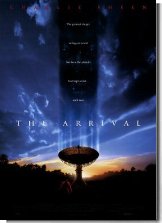
Whether you need some serious styling for your walls at home or work or are on the lookout to give someone a special gift they'll treasure forever, you support the work of Saturday Night Uforia whenever you shop for great posters from AllPosters.com from any link at this site -- any, each, and every time you start your shopping from here. You still get the same great deal as your friends and family, but a little will be sent back our way as a thank you from AllPosters.com. And you'll have the extra satisfaction of directly supporting the work of Saturday Night Uforia while treating yourself or friends to something special... like any of these great sci-fi movie posters (you can even have them mounted, laminated, or framed). Just click on the pic for a larger version...
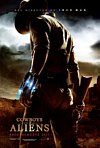






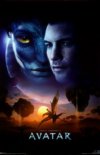

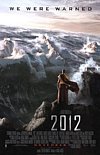
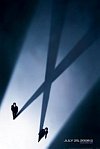
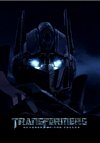

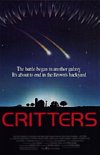
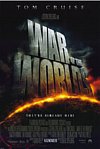


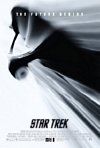



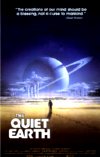

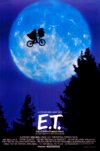
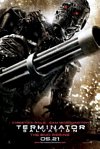

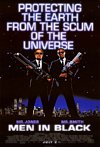
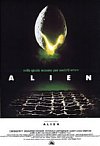






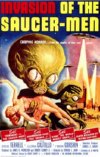
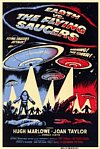





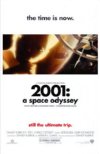
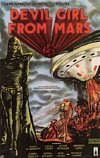

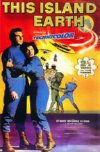
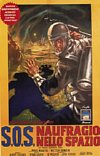

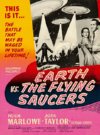

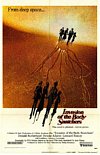
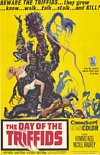
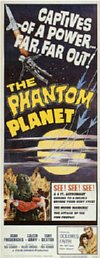

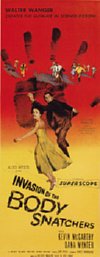



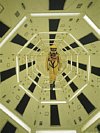



|




